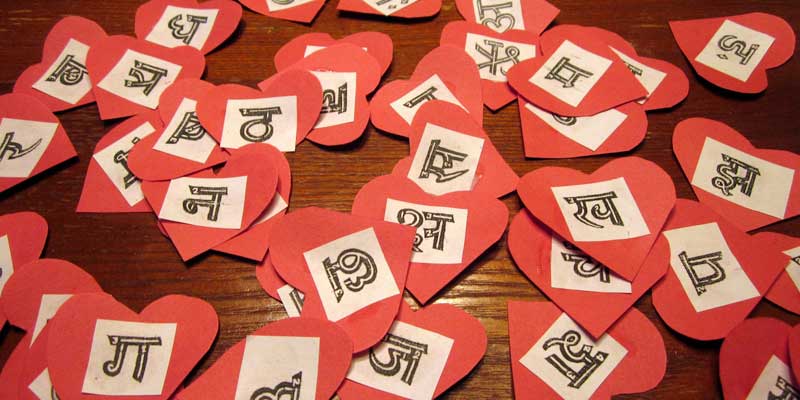The circular from home ministry promotes Hindi but does not impose it as claimed by regional parties.
A circular of the home ministry is giving headache to the southern regional parties. Dated May 27, a day after Narendra Modi was sworn in as Prime Minister of the country, the circular says that “all ministries, departments, PSUs and banks, who have their official account on social media, should use Hindi, or both Hindi and English, but give priority to Hindi.”
Well, the circular is quite clear in its motto – of promoting Hindi – as a Raj Bhasha. But it certainly does not impose the use of Hindi on anybody. But the regional parties beg to differ.
DMK chief M Karunanidhi on Thursday shot off a statement from Chennai, warning that “giving priority to Hindi will be construed as a first step towards attempt at creating differences among non-Hindi speaking people and making them second class citizens”.
Incidentally, DMK was at the forefront of a major anti-Hindi agitation in the 1960s in Tamil Nadu. But that agitation is long over and everybody knows that if Hindi is not a mass language, English is certainly not the connecting link.
Promotion of Hindi does not mean that other languages are being undermined. But it essentially means that the government is attempting to reach to the masses who, in current times, if not speak then at least understand Hindi.
Hindi may be a language of northern India, but it has a sense of Indian-ness in it. People, who are from the lower rungs of the society, and who do not have an English education, find themselves more comfortable in Hindi while interacting with others than in any other language irrespective of their regional language preference. There, Hindi becomes the connecting link.
The intelligentsia, who has a presence on social media, noted:
Language issue shd be handled sensitively. Hindi helps national integration, but non-Hindi states shouldn’t feel it’s being imposed on them.
— Sudheendra Kulkarni (@SudheenKulkarni) June 20, 2014
Some political leaders n parties r trying 2 manufacture a controversy about use of Hindi. Language war died long ago– let it remain so.
— sudhir tailang (@sudhirtailang) June 20, 2014
Jayalalitha cannot digest Hindi tweets. It does not agree with her Constitution
— Madhavan Narayanan (@madversity) June 20, 2014
‘Urdu’, a foreign language imposed forcibly by J&K CM. Original ‘Kashmiri’ hardly used officially. But, he has problems with use of ‘Hindi’.
— Aditya Raj Kaul (@AdityaRajKaul) June 20, 2014
#Hindi There are tens of thousands of Tamils (NRTs) whose Hindi is almost perfect. But they can’t read or write Tamil. Like me.
— T C A S Raghavan (@tca_tca) June 20, 2014
How come Hindi replacing English is an affront to regional languages? Insecure regional leaders or Macaulay Putras at work ?
— Hashmi Shams Tabreed (@hstabreed) June 19, 2014
India needs a new, genuine linguistic equilibrium, a new mix. We need Indian languages first, then Hindi as link language, then English.
— Rahul Dev (@rahuldev2) June 19, 2014
HIndi is official language at the center, constitutionally. What is the problem if central govt. offices are asked to communicate in hindi?”
— asmakhan pathan (@PathanAsmakhan) June 19, 2014
The problem with the current circular is that it comes at a time when the new leader of the country is widely seen as a Hindi-speaking-and-promoting person. It looks threatening to the non-Hindi people although it is a mere extension of the earlier circular by the UPA government dated March 23, which wanted the same exercise to be executed.
The same people are now jumping at the circular who praised PM Modi when he used Hindi as a medium of language for interaction with SAARC leaders. Their hue and cry is that regional languages will be treated as second rated languages.
But they are forgetting the fact that dual use of language has always been in practice. The government circulars, union budget and government websites are available in both the languages.
And the exercise is after all going to be limited to the central government offices. Then what are they outraging for?





